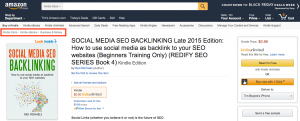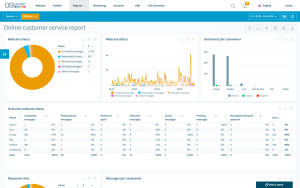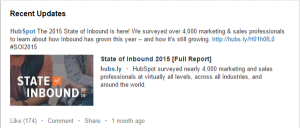Logic is a funny thing.
Most consumers think they make their decisions of what to buy, and what to do based on logic and information. However, the truth is that logic often intertwines with emotion in the buying cycle, and that means we can manipulate it.
Most startups know by now that emotion is a powerful force working to subconsciously influence the way customers feel about their favorite brands. Everything from the colors a brand uses, to its words, and its approach to selling can construct a specific image in our minds that prompts us to act a certain way.
While we often believe that logical decisions are totally separate from emotional ones – the truth is that decisions are never made without some emotion. However, that doesn’t mean that you can’t make your leads think that they’re making a logical decision…
The key to appealing to “buyer logic”, is to understand how the human mind works to process logical decisions. After all, as we’ve evolved, we’ve developed specific thought patterns that assist us in making decisions. Below, I’ll take a look at the science behind human logic, and how startups can appeal to it in their marketing efforts.
1. The rule of reciprocation
When a friend buys you lunch or gives you a gift as a surprise, you’ll generally feel obliged to do something for them in return. In fact, that feeling of obligation can be overwhelming – causing stress and discomfort until you find a way to pay back your imagined debt. The same sense of buyer logic applies to selling. If startups go out of their way to offer their customers something of value, then those customers will feel compelled to do something in return.
The rule of reciprocation is often why people leave reviews on websites. In part, we write testimonials to help other people make good purchasing decisions, but we’re also compelled to show that we appreciate whatever the brand gave us. It’s like saying thank you for a good experience.
In the example above, McDonalds uses “free mocha mondays” as a way of building a relationship with their audience. The idea is that if they offer you something, you’ll be more likely to reward them with continued business.
2. The threat of scarcity
If you go onto a website with the aim to buy a new pair of shoes, you might browse a few pairs and then put the purchase off until a later time when you feel more comfortable financially, or you end up with a hole in your favorite boots. However, if you click onto a website and see that there’s only one pair of shoes left in your style, your size, and your preferred price, then you’ll jump to act.
When supplies are limited, logic tells us that we need to act immediately in order to take advantage of a specific situation and save ourselves from loss. Creating urgency with countdown clocks, expiration dates and deadlines commands action from your leads, and therefore enhances your chances of earning the profits you want.

Booking.com is great at creating “scarcity” by letting you know that there are only so many rooms available in the hotels that you’re looking at.
3. The comfort of authority
If something seems authoritative and official, logic tells us that we should be able to trust it. That’s why recommendations from respected public figures, that little padlock on a website that indicates it’s secure, and great testimonials are a great way to generate trust with your reader.
Today’s buyers are skeptical of everything – and let’s face it, a little paranoid too. To end up with a successful conversion, you need to make sure that the value of what you’re offering outweighs the risk of buying something from you.
Evidence of your authority in the form of reports and case studies, or anything else that can add credibility to your name helps to remove some of the risk of investing in your products. In fact, authority makes your business the more logical choice for consumers. Startups are new, and uncertain, so customers need extra reassurance.
4. The value of contrast
How valuable is your startup?
To you it’s probably worth more than anything else in your life (except for your family and friends). However, it’s probably a lot less valuable to your consumers. This is because value is a relative concept. If someone told you that the bought a new computer for $ 1,000 you might think that the purchase was really expensive. However, if they told you that they got it for $ 1,000 when it was usually $ 5,000 logic says they got a great deal.
Startups use the value of contrast frequently in their marketing strategies. Think about all the sales that you see in local stores and online today. They don’t just show you the new price after applying the discount – but also display the old price too so you can calculate the value of your saving.
It’s a pretty clever process – but try not to trick your audience with it. People don’t like to feel as though they’re getting a great deal to begin with, only to find out that you made up the “before” price to help convert them.

Amazon.com is great at using the contrast technique. It doesn’t just show you the price you’re getting the item for, but the price that it was previously listed at too. In other words, you see how much you’re saving.
5. The Attribution Effect
In the world of psychology, the “Attribution effect” refers to the tendency that people have to place emphasis on the characteristics of a person, rather than an external factor. To put It in simple terms, if someone runs a red light and nearly takes out your car, you automatically assume that person is a reckless human being. However, the external factors may have warranted their bad behavior – for instance, they could have been rushing their pregnant wife to the hospital.
In business, consumers praise companies or blame them for activities that are often outside of their control. For instance, a problem with shipping immediately gets blamed on the business, when the issue might have been with a third-party organization.
Still, regardless of whether something was your fault or not, if you’re willing to take responsibility for your customer’s grievances, they’ll generally like you more for it. People just like to be listened to. If startups respect your customer’s feelings and apologize for their inconvenience, then their logic will define them as a more trustworthy company.
6. The loss aversion effort
Finally, loss aversion refers to the fact that humans are more inclined to avoid losses than work to acquire equivalent gains. We feel as though it’s better to save $ 20 than find the same amount in our bank account. Most marketers know that people prefer to see that they’ll be saving 25 percent rather than paying 75 percent- and that’s why they draw attention to the loss aversion, rather than the value.
To make the most of loss aversion, you simply need to change the language that you use. For instance, talk about what your consumer could lose without your product, rather than what they could gain from buying it. This desperation to avoid discomfort prompts people into action.
Loss aversion is often why free trials work well for selling programs and software. If your customer gets a chance to experience your product and see how valuable it is -failing to purchase the full system means that they risk the chance of losing everything they’ve gained.

The example above tells the reader that they could be “wasting” money, rather than letting them know how much they stand to gain from changing phone tariffs. By using the loss-aversion technique, the company appeals to the part of you that doesn’t want to lose out.
The logical conclusion
As I mentioned at the beginning of this article, people make decisions primarily with both emotion, and logic. The most effective options for startups will begin by appealing to emotions first, then presenting the logical aspects after to build loyalty and trust.
To be successful with your campaigns, you need to think carefully about how you can use both logic, and emotion together to prompt your audience into action. Remember with the right techniques you can manipulate logic, just like emotion.
Business & Finance Articles on Business 2 Community(85)








